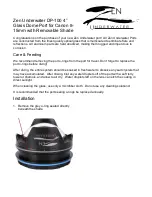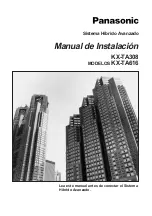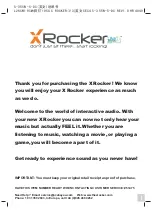
Visit our web site: www.wattstopper.com
WIRING DIRECTIONS
Maximum CI-200s per power pack: B series = 5, BZ series = 7. When using more sensors than this, multiple power packs are required.
For all configurations—connect the low voltage:
• RED wire (+24VDC) from power pack to VIOLET wire on sensor.
• BLACK wire (Return) from power pack to GREEN wire on sensor.
Connections for the following configurations: (Refer to wiring diagram below)
Single lighting load controlled by occupancy only
—connect:
• BLUE wire from power pack to yellow wire on sensor.
Single lighting load controlled by occupancy, dependent on light level
(ambient light)—connect:
• BLUE wire from power pack to blue wire on sensor.
One lighting load for occupancy control, and a second load for occupancy and light level
(ambient light)
control
—connect:
• BLUE wire from power pack to yellow wire on sensor.
• BLUE wire from
slave pack
to blue wire on sensor.
• BLACK wire from
slave pack
to gray wire on sensor.
Isolated Relay
(The Isolated Relay is rated for 1A @24VDC or 24VAC) Connect the wires necessary to the application that requires this output.
• RED (Common) (must be used for proper operation)
• BROWN (Normally Closed)—Open when occupancy is detected.
• ORANGE (Normally Open)—Closed when occupancy is detected.
White (Neutral)
Red (Load)
Red (Line)
White
Black
Hot
N
POWER PACK
Red
Black
Blue
Switch
Lighting
Load
Control Output 24VDC
Common
+24VDC
Light Level Output 24VDC
Normally Closed Contact
Common
Normally Open Contact
Isolated Relay Outputs
Black
Blue
Control Return
Wires
1-
BRN
2-
RED
3-
ORN
4-
YEL
5-
GRN
6-
BLU
7-
VIO
8-
GRA
Light
Level
Lighting
Load
SLAVE
PACK
Red (load)
Hot
OFF switch
N
CI-200
SENSOR ADJUSTMENT
The sensor comes factory preset and ready for operation. If testing of operation is desired:
• Remove the sensor’s cover (twist).
• Refer to the
DIP switch settings chart
for switch configurations.
• Make sure that office furniture and fixtures are in place.
1. Restore power to the lighting circuits and turn the lights on.
• There is a
one minute warm-up
when power is initially restored to the sensor before the
sensor works properly.
2. For testing, set the
Time Delay
to minimum (15 secs.).
3. Set
Sensitivity
to maximum.
4. Turn
Light Level
Adjustment trimpot to maximum.
5. Replace the sensor’s cover then move away from sensor and be still. The lights should go off
after 15 seconds. If lights remain on, see Unwanted Sensor Activations under Troubleshooting.
With movement in the area, the lights should turn back on.
6. If using the
light level
feature (otherwise skip to step 7), turn the adjustment trimpot to minimum,
and repeat step 5. Unless it is very dark, when the lights turn off, the lights controlled by light level
should not turn back on even with movement in the area. Until ready to make the final adjustment,
leave the setting at maximum. The controlled lights will then not be affected by ambient light levels.
To make the light level adjustment:
(The final light level setting for normal operation should be
made at a time when, with the lights off, the ambient light level is at the point where it is desired
for the lights to turn on.)
LED
Light Level
Adjustment
DIP Switch Control
for Time Delay and
Sensitivity
MAX
MIN
= ON
= OFF
= Factory Presets
DIP Switch #
15 seconds
4 minutes
6 minutes
8 minutes
10 minutes
12 minutes
14 minutes
16 minutes
18 minutes
20 minutes
22 minutes
24 minutes
26 minutes
28 minutes
2 minutes
1 2 3 4 5 6
30 minutes
Minimum
Medium Low
Medium High
Maximum
7 8
DIP Switch #
Time delay
Sensitivity
Service






























